Asanman Embankment (아산만방조제)
18.7Km 2024-02-22
759, Gongse-ri, Inju-myeon, Asan-si, Chungcheongnam-do
Asanman Embankment was created by blocking the stream that flows into the Asanman Bay in the West Sea. Although it was originally created to expand the farmlands of the region, Asanman Embankment became a tourist site over time thanks to its beautiful scenery. The area has the Yellow Sea to the west and Asanho Lake to the east. The western side of the embankment has a wide tidal flat. Fishing and drives can be enjoyed in the area. Don’t miss the view of the sunset toward the sea. In addition, there is a park, observatory, and exhibition hall in the area.
Gongseri Catholic Church (아산 공세리성당)
19.0Km 2024-10-16
10, Gongseriseongdang-gil, Asan-si, Chungcheongnam-do
+82-41-533-8181
Gongseri Catholic Church was founded in 1894 as the main parish of the Daejeon diocese in Gongse-ri, Inju-myeon that connects Asanman Bay to Sapgyocheon Stream. Early missionaries originally used a common house for church meetings in the early years until in 1897 when a rectory was built, followed by the establishment of the main church in 1922. This was the first Catholic church in Chungcheongnam-do and the religion spread across Anseong, Onyang, and Dunpo to establish regional churches respectively. The grounds have three graves of prosecuted martyrs, a parish and rectory, retreat house, and meeting room. The premises is surrounded by beautiful views of a lush forest.
House and Tomb of Kim Jeong-hui (추사김정희선생고택·묘)
19.3Km 2024-02-21
261, Chusagotaek-ro, Sinam-myeon, Yesan-gun, Chungcheongnam-do
This house and tomb are where Kim Jeong-hui (pen name: Chusa, 1786-1856), a Joseon-era scholar and artist, lived and was laid to rest. Chusa Memorial Hall and Chusa Experience Center are found next to the house. After studying in Qing China, Kim Jeong-hui served in multiple government posts. He is best known for his unique calligraphical style, which bears his courtesy name (Chusa), and many works of art that survive to this day. The Experience Center offers traditional art experiences inspired by Kim Jeong-hui’s works.
Simone (시모네)
19.3Km 2024-02-08
31 Jangsu-gil, Hyeondeok-myeon, Pyeongtaek-si, Gyeonggi-do
Simone is renowned for its egg tarts, boasting both an exterior and interior adorned in yellow. Its warm ambiance is enhanced by charming, visually appealing plating. The menu highlights a selection of egg tarts, including classic, green onion cream, corn, and chocolate varieties, all served with ample toppings. Their coffee, enriched with soft cream and corn, pairs wonderfully with the egg tarts.
House of Chusa (추사고택)
19.3Km 2022-12-28
261, Chusagotaek-ro, Yesan-gun, Chungcheongnam-do
+82-41-339-8248
House of Chusa, Chusa Gotaek in Korean, is the traditional Korean house of the renowned scholar and calligrapher Chusa, also known as Kim Jeong-hui. This old house is known to have been constructed by the great-grandfather of Chusa, Kim Han-Sin.
The Korean-style house compound (266.11 m²) consists of munganchae (a guesthouse), soseuldaemun (a high gate), sarangchae (ㄱ-shaped men's quarters), anchae (ㅁ-shaped women’s quarters) and a shrine where the remains of Chusa are enshrined. Theㄱ-shaped Sarangchae stretches for one kan (traditional measuring unit) to the south and 2 kans to the east and is comprised of two rooms and a daecheongmaru (living area). The Anchae consists of a six-kan daecheongmaru and two one-kan rooms.
Located on the ground is a tomb where Chusa’s great-grandfather (Kim Han-Sin) and his wife (Hwasun Princess) are buried. Nearby, visitors will see a gate that was constructed to commemorate Princess Hwasun’s faithfulness to her husband.
Located approximately 600 meters to the north of the old house is a lacebark pine tree, which was designated as a Natural Monument. The lacebark pine tree, originally from northern China, is among the few of its kind in Korea. It is said that Chusa snuck the pine across the border from China (formerly, the Qing dynasty) into the country when he was 25 years old and planted it at the tomb of his great-grandfather. Originally, the tree had three branches, but two were broken and the third branch was damaged. In 1980, the damaged branch was treated and since then, the tree has been kept under strong protection.
Chusa Memorial Hall (추사기념관)
19.5Km 2024-12-27
+82-41-339-8247
Chusa Memorial Hall opened in 2008, holds works of Chusa Gim Jeong-hui including his arts, epigraphy, calligraphy and more. The memorial hall preserves and exhibits Chusa Gin Jeong-hui's works to show future generations about his achievements.
Korean Modern Music Hall (한국근현대음악관)
19.6Km 2024-10-10
147 Pyeongtaekho-gil, Hyeondeok-myeon, Pyeongtaek-si, Gyeonggi-do
+82-31-8024-8683
Korean Modern Music Hall, located at The Korea Soriter Arts Center in Pyeongtaekho Tourist Complex, is the first cultural complex dedicated to modern Korean music, serving as a museum, library, and archive. It has made a name for itself as Korea's representative music institution, bringing together Korean and Western music, modern and contemporary music, as well as the public and the people. It is an organization that arranges various events to help people view and comprehend history in new ways through a perspective of "music" with its collections related to different fields, including anti-Japanese and pro-Japanese music, the independence movement, music instruction, music from North Korea and Japan, and modern pop music.
Pyeongtaek Water Light Festival (평택호 물빛축제)
19.6Km 2024-07-25
147 Pyeongtaekho-gil, Hyeondeok-myeon, Pyeongtaek-si, Gyeonggi-do
+82-31-8053-3545
The Pyeongtaek Water Light Festival takes place at Pyeongtaekho Lake with many programs under the themes of water and light. The fireworks show is a must-see highlight.
Seosan Gaesimsa Temple (개심사(서산))
19.9Km 2021-09-18
321-86, Gaesimsa-ro, Seosan-si, Chungcheongnam-do
+82-41-688-2256
Situated in a dense forest in Sangwangsan Mountain and 6 kilometers away from Haemi-myeon, Gaesimsa Temple is one of the four major temples in Chungcheongnam-do. The path from the parking lot to the temple site is quite remote and curved, but beautiful especially in spring when cherry blossoms are in full bloom.
The temple was built in 1484 during the 15th year of King Seongjong and designated as a Treasure. The architecture of the temple stands out, as the buildings use bent tree trunks for pillars.
Pyeongtaekho Art Park (평택호예술공원)
19.9Km 2024-10-28
167 Pyeongtaekho-gil, Hyeondeok-myeon, Pyeongtaek-si, Gyeonggi-do
Pyeongtaekho is a lake that flows to the western sea. Pyeongtaekho Art Park is located along side it. Sculptures are spread throughout the park, creating a pleasant atmosphere for visitors to stroll and enjoy the art. The Ji Young-hee Gugak Center and Haegum Bench have been built to commemorate Ji Young-hee's (1909-1980) achievements as a national intangible cultural heritage who pioneered the popularization and globalization of Korean traditional music. The Korea Soriter Arts Center has an outdoor performance hall and a library dedicated to traditional Korean music.
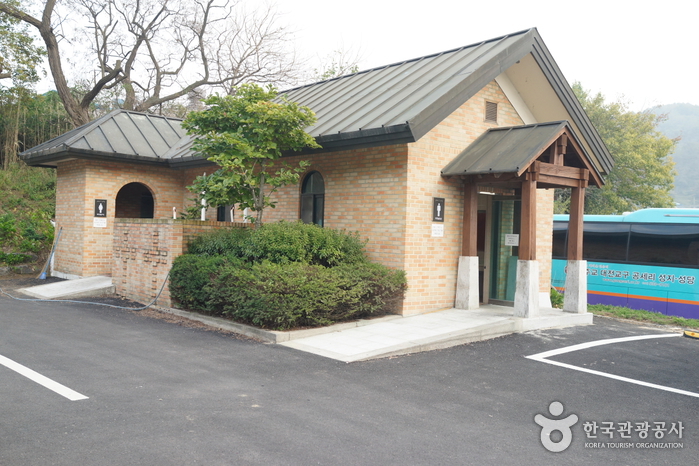

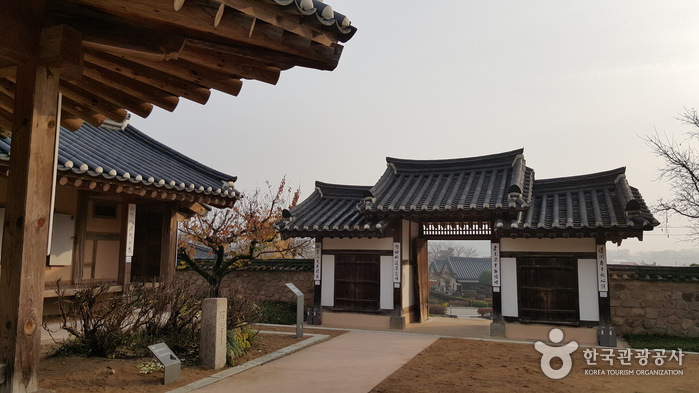
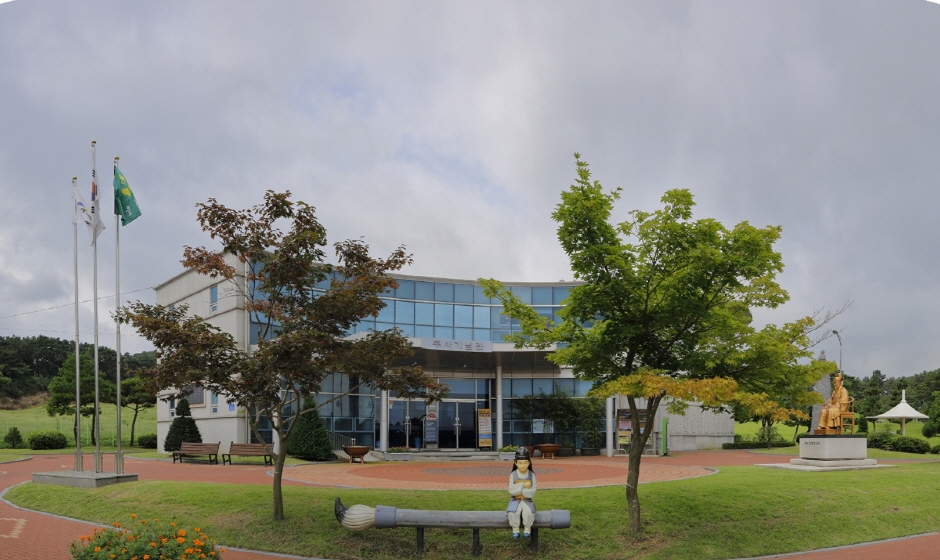
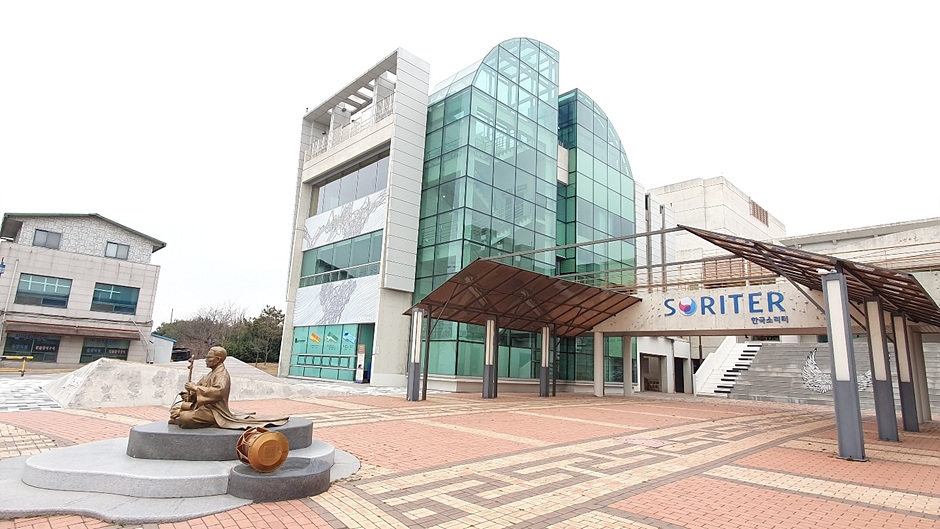
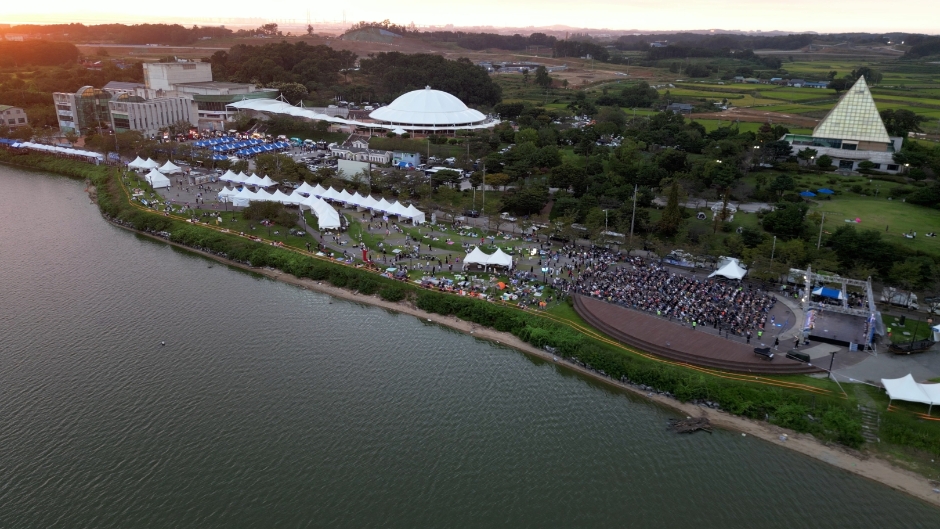
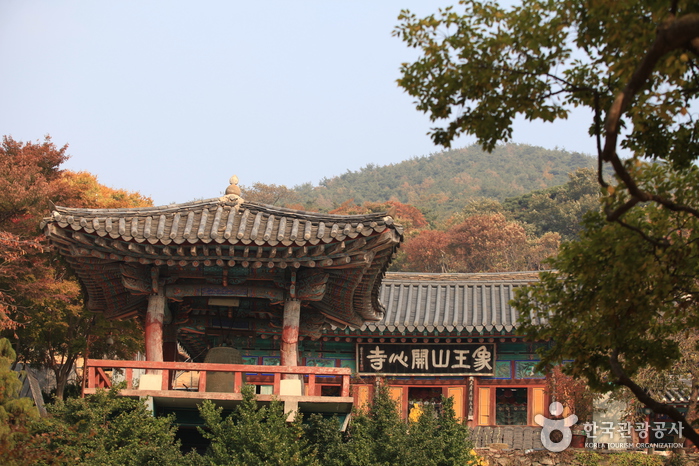
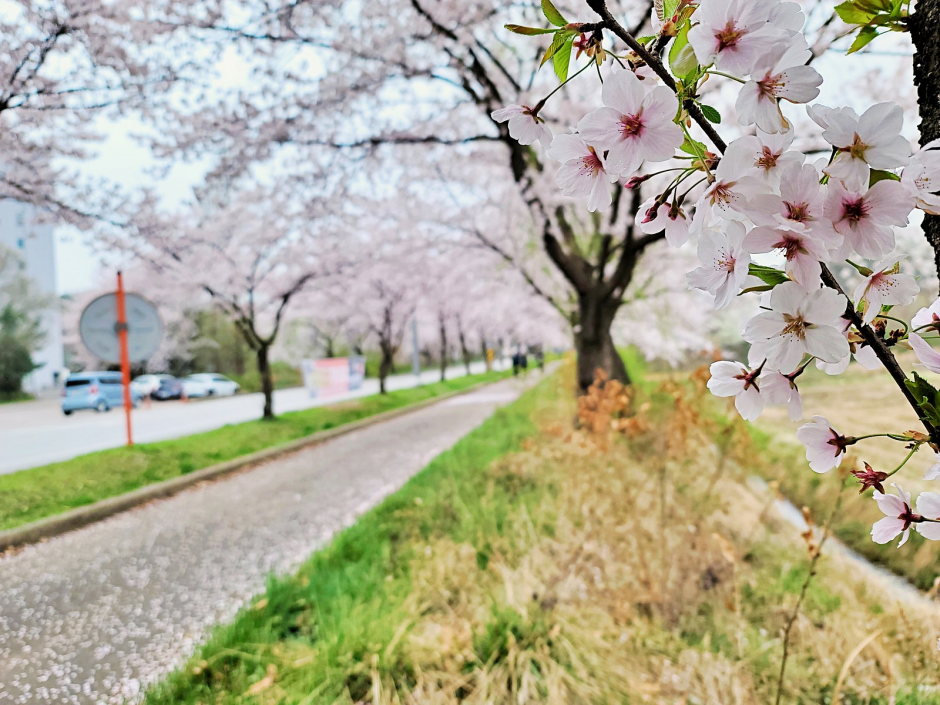
 English
English
 한국어
한국어 日本語
日本語 中文(简体)
中文(简体) Deutsch
Deutsch Français
Français Español
Español Русский
Русский